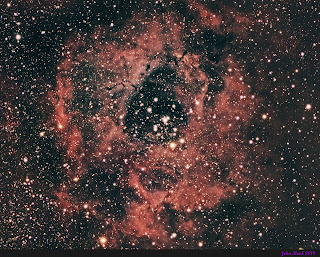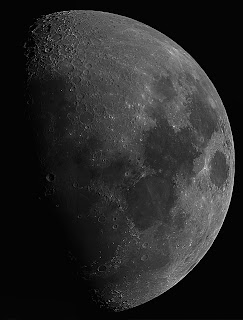C50 or NGC 2244 Rosette Nebula
I haven't been able to capture much lately which is typical this time of year. It is difficult with all the storm activity that comes of winter and there is the add inversions causing fog on the floor of the valley. I had a chance to get some data on the horsehead nebula but it is a little noisy due to an inversion. I was lucky when I captured the Rosette near the first week of January. We had a clear night between storms and so there wasn't yet a chance for an inversion. I was able to get 4 hours of data but the last hour was too low to the horizon and Pixinsight subframe selector told me that the SNR went way down and the entricity along with the FWHM of the stars increased dramatically. So I excluded the last hour of data. I finely went for it and purchased Pixinsight. I tried using it last summer for a while and got frustrated with it because it took me so long to process a picture in it. After doing some studding over the year and discovering the power it has with deconvolution and convulsion, not to mention the masking tools it has, I decided it was much better than Photoshop. I have been using Pixinsight a lot over the Christmas break and I have really come to like it.
The Rosette nebula is located in the constellation Monoceros or as my daughter and I call it the Unicorn. The Rosette and open star cluster in this area is the eye of the Unicorn. It is also about 7 degrees west of Betelgeuse in Orion. In my 12" telescope at a dark site it is very diffuse and just able to make out. With a H-beta filter, you can see a lot more. I took 2 minute sub frames but I think 3 minute would've been better. In the future, I will try to get some H-alpha data to add to this.
The Rosette nebula is located in the constellation Monoceros or as my daughter and I call it the Unicorn. The Rosette and open star cluster in this area is the eye of the Unicorn. It is also about 7 degrees west of Betelgeuse in Orion. In my 12" telescope at a dark site it is very diffuse and just able to make out. With a H-beta filter, you can see a lot more. I took 2 minute sub frames but I think 3 minute would've been better. In the future, I will try to get some H-alpha data to add to this.



Comments
Post a Comment